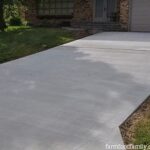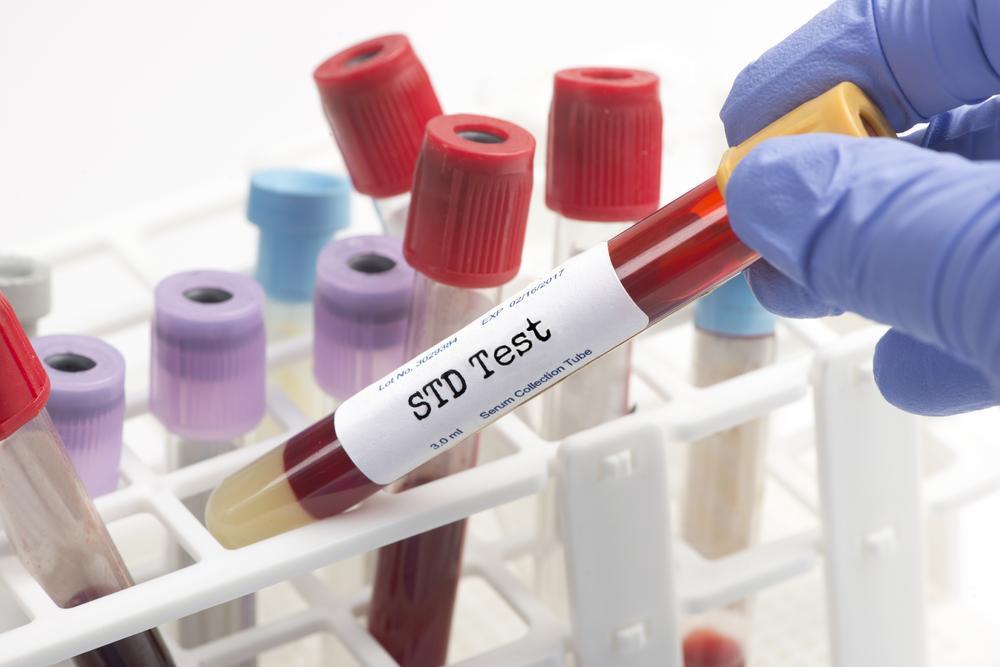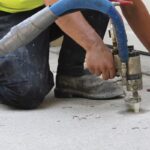Featured News
Posts List
Posts Slider
Health
Ayurvedic Oil Massage for Arthritis: Does It Really Work?
Arthritis is a chronic condition that affects millions worldwide, causing joint pain, stiffness, and reduced mobility. Conventional treatments often provide symptomatic relief but may come with side effects. Ayurveda, an ancient healing system, offers holistic solutions, including oil massage, to alleviate arthritis symptoms naturally. But does Ayurvedic oil massage truly work? Let’s explore how it helps and why it is considered one of the best Ayurvedic arthritis treatments.
Understanding Ayurvedic Oil Massage (Abhyanga)
Ayurvedic oil massage, known as Abhyanga, is a therapeutic practice where warm medicated oils are massaged onto the body. This technique is believed to balance the body’s doshas (Vata, Pitta, and Kapha) and enhance blood circulation, reducing stiffness and inflammation in the joints. Ayurvedic practitioners use specialized oils infused with potent herbs to penetrate deep into the tissues, providing relief from arthritis symptoms.
How Ayurvedic Oil Massage Helps in Arthritis
1. Reduces Inflammation and Pain
Arthritis, particularly osteoarthritis and rheumatoid arthritis, involves inflammation of the joints. Ayurvedic oils containing anti-inflammatory herbs like Ashwagandha, Nirgundi, and Dashmool help soothe inflamed joints, offering significant relief from pain.
2. Improves Blood Circulation
Poor circulation can exacerbate arthritis symptoms. Ayurvedic oil massage enhances blood flow, ensuring proper nutrient delivery to the joints, which aids in healing and reducing stiffness.
3. Lubricates Joints and Enhances Mobility
Ayurvedic oils provide deep nourishment to the joints, acting as a natural lubricant. This lubrication improves joint flexibility, making movements smoother and pain-free, making it a key part of Ayurvedic arthritis treatment.
4. Detoxifies the Body
Accumulation of toxins (Ama) in the body is believed to contribute to arthritis. Ayurvedic massage, combined with herbal formulations, promotes toxin removal through lymphatic drainage, reducing pain and inflammation.
5. Calms the Nervous System and Reduces Stress
Chronic pain often leads to stress, which can worsen arthritis symptoms. The rhythmic strokes of Ayurvedic oil massage help relax the nervous system, reducing stress and promoting overall well-being.
Best Ayurvedic Oils for Arthritis Treatment
Several Ayurvedic oils are highly effective in arthritis therapy. Some of the best include:
- Mahanarayan Oil – Enriched with herbs like Ashwagandha and Shatavari, this oil relieves joint pain and enhances strength.
- Dhanwantharam Oil – Used in post-natal care and arthritis, it strengthens muscles and reduces stiffness.
- Kottamchukkadi Oil – Effective in reducing swelling and stiffness in arthritis-affected joints.
- Pinda Thailam – Known for its cooling properties, it works well for rheumatoid arthritis.
Why Choose the Best Ayurvedic Arthritis Therapy?
Unlike conventional treatments that often rely on painkillers and steroids, Ayurvedic arthritis treatment addresses the root cause of the condition. Ayurvedic oil massage, combined with dietary changes, herbal medicines, and Panchakarma therapies, provides a comprehensive healing approach without side effects.
Ayurvedic Treatment for Arthritis Knee Pain
Knee arthritis is one of the most common types, leading to severe discomfort and mobility issues. Ayurvedic oil massage specifically targets knee joints, reducing inflammation and strengthening the surrounding muscles. Therapies like Janu Basti (where warm medicated oil is pooled over the knee) are highly effective in alleviating arthritis-related knee pain.
Neeraj Arthritis Clinic: A Trusted Name in Ayurvedic Arthritis Treatment
For those seeking the best Ayurvedic arthritis treatment, Neeraj Arthritis Clinic is a reputed name. Specializing in Ayurvedic therapies for arthritis, the clinic offers personalized treatments that include oil massages, herbal remedies, and detoxification procedures. Their holistic approach has helped countless patients regain mobility and lead pain-free lives.
Final Verdict: Does Ayurvedic Oil Massage Work for Arthritis?
Yes, Ayurvedic oil massage is an effective natural therapy for arthritis. It provides pain relief, reduces inflammation, and improves joint flexibility without adverse effects. While it may not offer an overnight cure, regular practice, combined with a holistic Ayurvedic regimen, can significantly improve arthritis symptoms.
For those suffering from arthritis, exploring Ayurvedic treatment for arthritis knee pain and other joint-related issues through trusted centers like Neeraj Arthritis Clinic can be a life-changing decision. Ayurveda’s time-tested wisdom, backed by modern research, continues to offer hope for those seeking a natural and sustainable solution to arthritis pain.
Lifestyle
11 Honey Health Benefits for Children Over 2: A Natural Sweet Solution
Honey has long been praised as a natural powerhouse of health benefits. For children over the age of two, honey not only serves as a delicious sweetener but also offers a wide range of nutrients, antioxidants, and healing properties. In this article, we’ll explore the 11 incredible health benefits of honey for children over 2 years old, along with safe and creative ways to include honey in their diet, and where you can buy honey sachets online for easy use.
Note: Honey should never be given to babies under 1 year due to the risk of infant botulism. Always consult your pediatrician before introducing new foods into your child’s diet.
1. Boosts Immunity Naturally
Honey is rich in antioxidants, enzymes, and antibacterial properties. These help to build and strengthen a child’s immune system, making them less prone to seasonal infections like cold, cough, and flu.
Tip: A spoonful of honey mixed with warm water or milk can be a daily immunity booster.
2. Soothes Sore Throat and Cough
One of the most common traditional uses of honey is for soothing sore throats and persistent coughs. It acts as a natural cough suppressant and coats the throat, reducing irritation.
Tip: Mix honey with a pinch of turmeric or ginger juice for added anti-inflammatory benefits.
3. Improves Digestion
Honey can help improve digestion by promoting the growth of good bacteria in the intestines. It also helps in relieving constipation, a common issue among toddlers.
Tip: Add a teaspoon of honey to warm lemon water to support your child’s digestive system.
4. Heals Wounds and Burns
Thanks to its antibacterial and anti-inflammatory properties, honey can be applied topically to minor wounds, cuts, and burns. It speeds up healing and prevents infections.
Tip: Always use medical-grade honey for wounds and consult a pediatrician before applying it on the skin.
5. Aids in Better Sleep
Honey promotes the release of serotonin, which is then converted into melatonin, the hormone responsible for regulating sleep. Giving your child honey before bed can help them relax and sleep better.
Tip: Warm milk with a little honey before bedtime can become a calming nighttime ritual.
6. Provides Energy
Honey is a natural source of carbohydrates and sugars that can give an instant energy boost—perfect for active, growing children. It’s a much healthier alternative to processed sugar or artificial sweeteners.
Tip: Mix honey into fruit smoothies or oatmeal to give your child a nutritious and energy-packed snack.
7. Improves Memory and Brain Function
The antioxidants in honey are believed to reduce oxidative stress and inflammation in the brain, which may help in boosting memory and overall cognitive development in children.
Tip: Honey with walnuts or almonds can be a brain-friendly snack (ensure your child is not allergic to nuts).
8. Supports Healthy Weight Gain
For children who are underweight, honey can be used as a natural weight gainer because it improves appetite and promotes better digestion.
Tip: Spread honey on whole-wheat bread or mix it with banana to create a calorie-dense snack.
9. Treats Seasonal Allergies
Local honey may help children adapt to seasonal pollen and reduce allergic symptoms over time. This works like a natural form of immunotherapy.
Tip: Give your child a small amount of local raw honey daily before allergy season begins. Always consult your doctor first.
10. Promotes Oral Health (in moderation)
While sugary treats are harmful to teeth, honey’s antimicrobial properties can actually reduce bacteria in the mouth—when used sparingly. It may help in preventing mouth ulcers and infections.
Tip: Make sure your child brushes their teeth after consuming honey to avoid tooth decay.
11. Rich in Essential Nutrients
Honey contains small amounts of vitamins and minerals such as calcium, magnesium, potassium, and Vitamin C. These contribute to your child’s overall growth and development.
Safe and Creative Ways to Give Honey to Children
Introducing honey to a child’s diet should be done thoughtfully. Here are some fun and healthy ways to incorporate it:
✅ Honey with Warm Water
A simple and effective way to detox and boost digestion. Give this first thing in the morning.
✅ Spread on Toast or Rotis
Honey can be a healthier spread alternative for bread or rotis, topped with a little ghee.
✅ Add to Smoothies or Milkshakes
Blend honey into fruit or nut-based smoothies to naturally sweeten them.
✅ Drizzle Over Fruits or Porridge
Top chopped fruits or a bowl of oats with a drizzle of honey for added taste and nutrients.
✅ Homemade Honey Lollipops
Make natural honey lollipops using lemon juice and ginger for sore throats and coughs.
✅ Mix with Curd or Yogurt
A spoonful of honey mixed with yogurt makes a perfect post-meal treat.
Buy Honey Sachets Online – Convenient and Travel-Friendly
If you’re a busy parent looking for a mess-free, portable way to use honey, honey sachets are the perfect solution. They come in single-use packets, making them easy to carry in lunchboxes, purses, or while traveling.
🛒 Where to Buy Honey Sachets Online
Here are some popular platforms where you can buy high-quality honey sachets:
- Amazon India – Search for brands like Dabur, Apis, Zandu, Patanjali, Farm Honey.
- BigBasket – Offers both branded and organic options.
- Flipkart – Check for combo packs and deals.
- 1mg or Netmeds – Health-focused platforms that sell sachets for medicinal use.
- Official Brand Websites – Visit Dabur or Apis Himalaya directly for bulk orders.
Pro Tip: Look for sachets made of pure, raw, or organic honey for maximum health benefits. Avoid those with added sugar or artificial flavors.
Final Thoughts
Honey is not just a natural sweetener—it’s a powerhouse of health benefits for children over the age of two. From building immunity and aiding digestion to improving sleep and brain function, this golden liquid is a must-have in your child’s daily diet.
Just remember to use it in moderation and consult your pediatrician, especially if your child has allergies or existing health issues.
So why wait? Try adding honey to your child’s meals in fun and creative ways—and if you’re a parent on the go, honey sachets online are a total game-changer!
Posts Carousel
Latest News
11 Honey Health Benefits for Children Over 2: A Natural Sweet Solution
Honey has long been praised as a natural powerhouse of health benefits. For children over the age of two, honey not only serves as a delicious sweetener but also offers…
Maximizing Trading Potential: The Power of MTF and 3-in-1 Accounts in India
Introduction Investing in the stock market has become more accessible than ever, thanks to technological advancements and financial innovations. One such powerful tool for traders is Margin Trading Funding (MTF),…
Ayurvedic Oil Massage for Arthritis: Does It Really Work?
Arthritis is a chronic condition that affects millions worldwide, causing joint pain, stiffness, and reduced mobility. Conventional treatments often provide symptomatic relief but may come with side effects. Ayurveda, an…
Concrete Resurfacing vs. Replacement: Is Repair Worth It?
Concrete is a widely used material in driveways, patios, sidewalks, and floors due to its durability and longevity. However, over time, exposure to weather elements, heavy foot traffic, and daily…
Budget 2025 Expectations: Key Areas to Watch
As India prepares for the Union Budget 2025, expectations are running high across various sectors. The government’s fiscal policies play a crucial role in shaping economic growth, infrastructure development, employment…




















